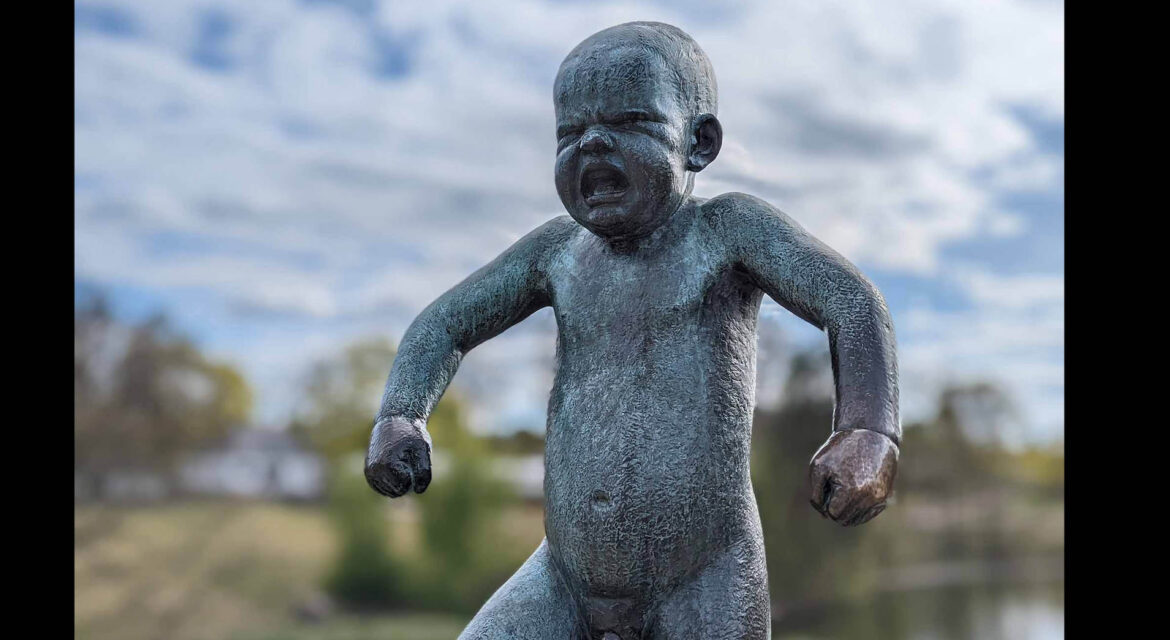 Featuring over 200 sculptures in granite, bronze and wrought iron, Vigeland Sculpture Park is one of the most notable monuments in Oslo, Norway. Sinnataggen (The Angry Boy) is just one of the sculptures that define this landmark but it has become an icon of the city in a way that connects with audiences on multiple levels.
Featuring over 200 sculptures in granite, bronze and wrought iron, Vigeland Sculpture Park is one of the most notable monuments in Oslo, Norway. Sinnataggen (The Angry Boy) is just one of the sculptures that define this landmark but it has become an icon of the city in a way that connects with audiences on multiple levels.
Themes Related to Play, Lust, Energy and Vitalism
 While Vigeland Sculpture Park features over 200 sculptures that were installed across multiple decades, Gustav Vigeland modeled many of the sculptures that reside on the Bridge from 1925-1933. Sinnataggen is one of the 58 sculptures on the Bridge that share themes related to play, lust, energy and vitalism. While many other sculptures on the Bridge and elsewhere depict figures of a similar nature or connected to the same theme, Sinnataggen has become individually famous on account of the reception that it has elicited from both residents and visitors.
While Vigeland Sculpture Park features over 200 sculptures that were installed across multiple decades, Gustav Vigeland modeled many of the sculptures that reside on the Bridge from 1925-1933. Sinnataggen is one of the 58 sculptures on the Bridge that share themes related to play, lust, energy and vitalism. While many other sculptures on the Bridge and elsewhere depict figures of a similar nature or connected to the same theme, Sinnataggen has become individually famous on account of the reception that it has elicited from both residents and visitors.
After being installed, audiences were immediately captivated by the concept and look of the shouting child, which features a juxtaposition of anger and innocence that compels interest on every level. To illustrate this widespread captivation, Sinnataggen is featured on countless pieces of merchandise for sale across the city. However, the local community has embraced it as well. When Sinnataggen was temporarily removed, stakeholders received numerous inquiries from the public about when it would return.
Constantly surrounded by crowds trying to take pictures of and with the sculpture, Sinnataggen highlights what it can mean for a monument to become an icon. It also showcases how doing so can happen naturally for the benefit of both audiences and stakeholders.

Impacting Audiences Across the Eras
 One of the Vigeland Sculpture Park’s more popular statues, Sinnataggen is just one of the many pieces on the Bridge depicting a child. Other statues like “Man Attacked by Babies” have achieved similarly iconic status, further showcasing how monuments can make an impact on audiences across the eras in ways that were not originally envisioned.
One of the Vigeland Sculpture Park’s more popular statues, Sinnataggen is just one of the many pieces on the Bridge depicting a child. Other statues like “Man Attacked by Babies” have achieved similarly iconic status, further showcasing how monuments can make an impact on audiences across the eras in ways that were not originally envisioned.


